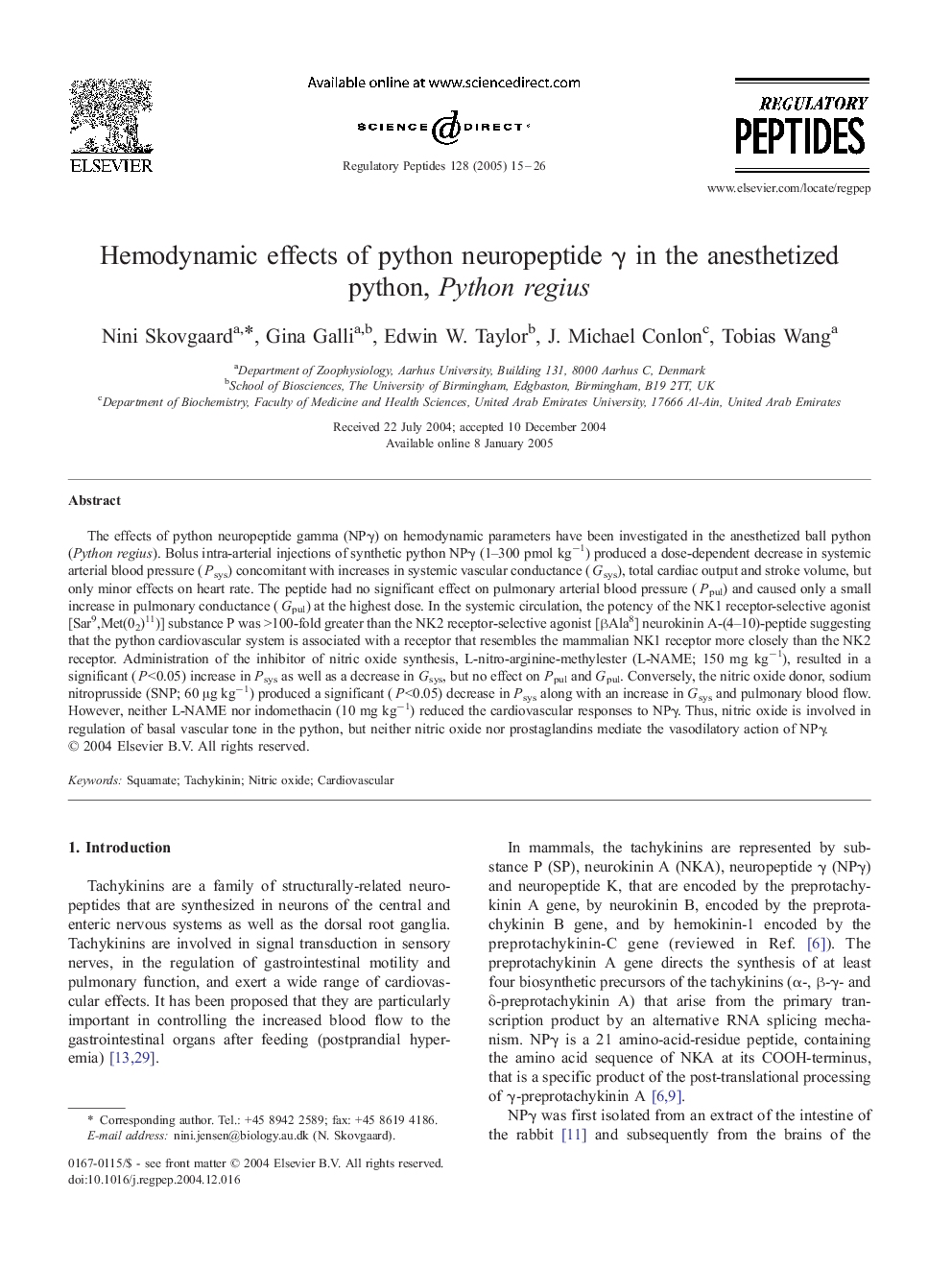| Article ID | Journal | Published Year | Pages | File Type |
|---|---|---|---|---|
| 10845338 | Regulatory Peptides | 2005 | 12 Pages |
Abstract
The effects of python neuropeptide gamma (NPγ) on hemodynamic parameters have been investigated in the anesthetized ball python (Python regius). Bolus intra-arterial injections of synthetic python NPγ (1-300 pmol kgâ1) produced a dose-dependent decrease in systemic arterial blood pressure (Psys) concomitant with increases in systemic vascular conductance (Gsys), total cardiac output and stroke volume, but only minor effects on heart rate. The peptide had no significant effect on pulmonary arterial blood pressure (Ppul) and caused only a small increase in pulmonary conductance (Gpul) at the highest dose. In the systemic circulation, the potency of the NK1 receptor-selective agonist [Sar9,Met(02)11)] substance P was >100-fold greater than the NK2 receptor-selective agonist [βAla8] neurokinin A-(4-10)-peptide suggesting that the python cardiovascular system is associated with a receptor that resembles the mammalian NK1 receptor more closely than the NK2 receptor. Administration of the inhibitor of nitric oxide synthesis, L-nitro-arginine-methylester (L-NAME; 150 mg kgâ1), resulted in a significant (P<0.05) increase in Psys as well as a decrease in Gsys, but no effect on Ppul and Gpul. Conversely, the nitric oxide donor, sodium nitroprusside (SNP; 60 μg kgâ1) produced a significant (P<0.05) decrease in Psys along with an increase in Gsys and pulmonary blood flow. However, neither L-NAME nor indomethacin (10 mg kgâ1) reduced the cardiovascular responses to NPγ. Thus, nitric oxide is involved in regulation of basal vascular tone in the python, but neither nitric oxide nor prostaglandins mediate the vasodilatory action of NPγ.
Related Topics
Life Sciences
Biochemistry, Genetics and Molecular Biology
Biochemistry
Authors
Nini Skovgaard, Gina Galli, Edwin W. Taylor, J. Michael Conlon, Tobias Wang,
